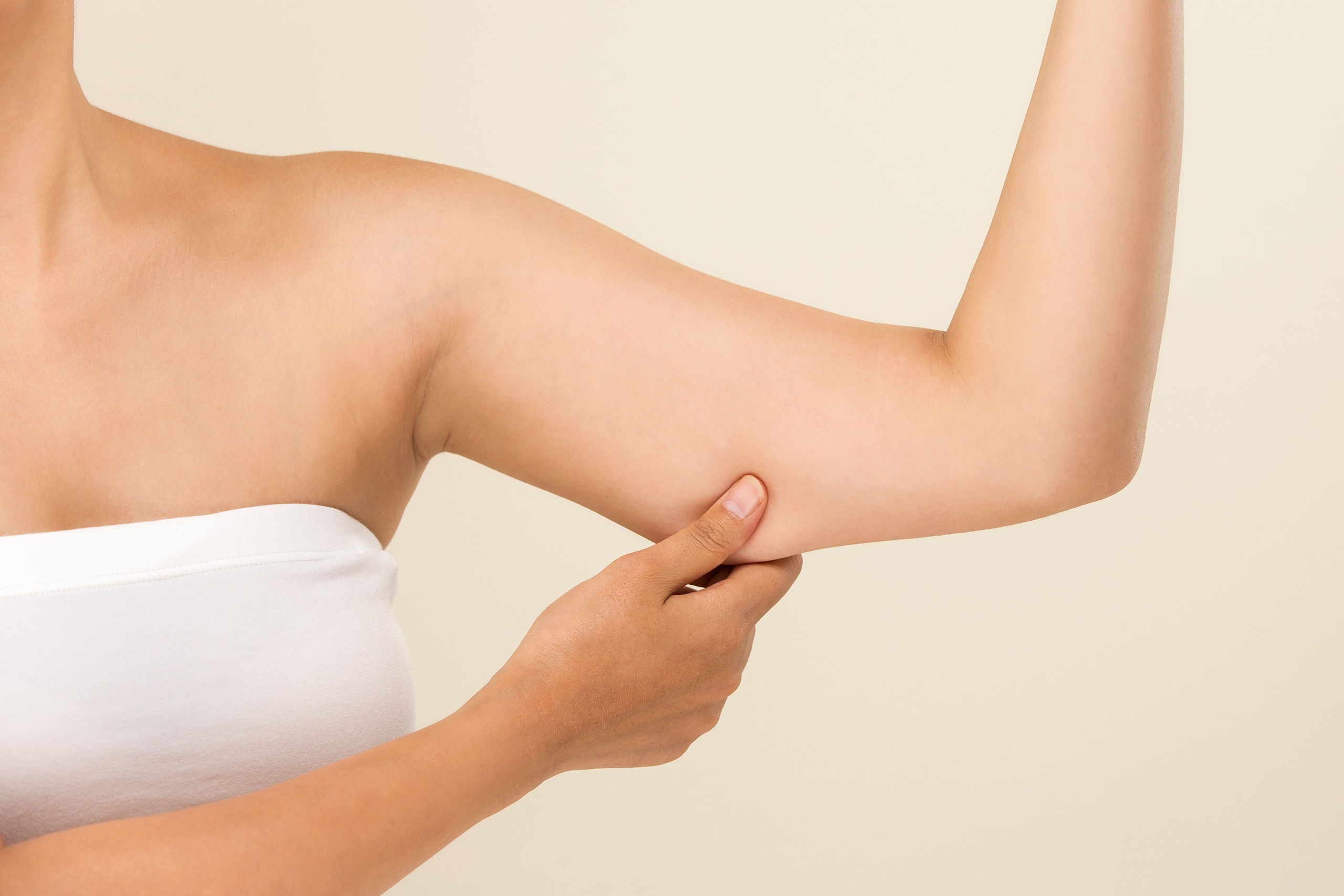Capsular contracture is the most common complication after breast augmentation or breast reconstruction with implants, but thanks to modern surgical techniques and breast implants, it is increasingly on the decline. It is not always necessary to remove the implant, but sometimes it is inevitable. However, that does not mean that you have to forego the use of implants entirely. After the necessary correction of the capsular contracture, Dr. Matiasek will help you regain your dream figure, because in addition to health, the satisfaction of his patients is also in the foreground.
What is capsular contracture?
The most common complication after a breast augmentation with implants is the so-called capsular fibrosis (capsular contracture), a defense reaction of the body against the implant. The immune system naturally forms a connective tissue-like capsule around every foreign body, including the implant. Normally this capsule is not noticeable as it has the soft consistency of the breast due to its delicate and thin nature. If this capsule hardens noticeably and visibly, then it is a case of capsular fibrosis.
Up to 15 percent of women used to show symptoms of capsular contracture within the first few years after breast augmentation or breast reconstruction with implants. Even years after the operation, capsular contracture is theoretically still possible. However, plastic, reconstructive and aesthetic surgery is continuously developing; thanks to the modifications to the implants and surgical equipment, the number of women affected has fallen significantly in recent years. Dr. Matiasek offers his patients only the highest quality implants, the highest hygienic safety standards and the most modern surgical techniques in order to keep the risk of complications as low as possible during every procedure.
How is capsular contracture noticeable?
At the beginning, patients do not notice the capsular contracture, only in the course of time do unpleasant feelings of tension, pain and visible deformations appear. Either one breast or both breasts can be affected. The extent of capsular contracture is divided into four different degrees according to the American plastic surgeon Baker.
Grade I describes the normal breast after the use of implants. The capsule is soft and of normal consistency, there are no palpable or visible deformations of the breast. In addition, the patients do not feel any pain. Grade II is accompanied by slight feelings of tension in the breast due to the slight induration. The slight capsular contracture can already be felt, but is not yet visible from the outside. Grade III manifests itself in visible slight deformations of the breast. Pain is possible, but not inevitable. Grade IV shows a significant deformation and breast asymmetries, which give the breasts an unnatural appearance with dents or wrinkles. The women affected feel severe pain even when on light contact. In addition, there is a risk of the implant tearing due to the deformation and the pressure exerted as a result.
If you notice tension, pain or deformation in your breasts, contact a doctor immediately – this is the only way to diagnose capsular contracture at an early stage and initiate appropriate treatment.

How does capsular contracture develop?
As the wound heals, every foreign body, such as a breast implant, is enclosed in a layer of scar tissue that holds the implant in place in the breast. In the case of capsular contracture, this layer contracts, whereupon it hardens and the implant is twisted, changed or displaced.
Why the capsule shrinks is not yet fully understood. There is probably an inflammatory reaction caused by bacteria on the surface of the implant. There are also some risk factors that promote the development of capsular contracture. One of these factors is the surface area of the implant. In contrast to the older generation, the new generation of implants has neither a completely smooth nor an extremely rough surface, but a slightly textured surface. This texture already significantly reduces the risk of capsular contracture.
The position of the implant also plays a role; implants below the breast muscle are less likely to be affected by capsular contracture than those placed near the mammary gland. Nevertheless, the location of the implant is carefully selected according to the individual anatomical conditions as well as the wishes and needs of the patient, which means that positioning under the pectoral muscle is not always an option.
Women who are faced with other complications, such as heavy bleeding during surgery, bruising in the wound cavity or postoperative bleeding, and radiation for breast reconstruction, are also at greater risk of capsular contracture. In addition, the likelihood of this complication increases in patients who have a hereditary tendency to capsular contracture or severe scarring, or who have an autoimmune disease or breast cancer.
Even before the implant is used, Dr. Matiasek will advise you in detail about the risk of capsular contracture in your individual case and offer alternatives for fulfilling your wishes, such as breast enlargement or reconstruction using autologous fat.
What do I have to consider before treating capsular contracture?
An important part of every breast augmentation and breast reconstruction with implants are the follow-up examinations, during the course of which capsular contracture can be detected at an early stage by palpitation or ultrasound examinations. If the capsular contracture requires another operation, it is essential to avoid any anticoagulant medication before the operation in order to avoid the risk of excessive bleeding during the operation. Alcohol and nicotine interfere with wound healing, so you should not consume them for some time before the procedure. The operation is performed under general anesthesia, so you must be on an empty stomach, which means that you should not have any food for at least six hours before the appointment and no water or unsweetened tea two hours before.
How does the treatment of capsular contracture work?
What the treatment for capsular contracture looks like depends on your individual situation, such as the degree of capsular contracture. The first step is to use pain relievers or anti-inflammatories to relieve the pain. If the capsular contracture has not progressed too far, it is opened with an incision known as an endoscopic capsulotomy. As a result, the implant is no longer constricted by the capsule and can unfold again to its original shape.
In certain cases, opening the capsule is no longer possible or sufficient, then the implant and, if necessary, the entire capsule (capsule resection) is removed. Of course, after a certain period of time, the implant can be replaced and your breast can be restored to the look you want.
What are the complications of capsular contracture treatment?
Before the procedure, Dr. Matiasek explains in detail the possible risks and complications of the operation in a personal conversation. Basically, treating capsular contracture carries the same risks as any operation under general anesthesia. Bleeding may occur within the first 24 hours, which may require further surgery if the breast becomes swollen. Pain, for example in the arm area, wound healing problems, sensitivity disorders and breast bruises are also possible.
What do I have to consider after treating capsular contracture?
You should definitely rest after the procedure. Pain or bruising can be relieved with appropriate cooling and should subside quickly. A compression bra helps the tissue to heal and regress, so you should wear it both day and night for the first six weeks. During these six weeks, lifting and carrying heavy loads, strenuous activities or jogging is not recommended.
Due to the risk of infection, do not visit the sauna, solarium or steam bath in the first few weeks after the procedure. In addition, intense UV radiation would affect the healing of the scars, so avoid intense sun exposure for the next six months. Showering is allowed again three to four days after the procedure, but you should keep the wound dry. You should also refrain from alcohol and nicotine until you are completely healed; instead, make sure you eat a healthy and balanced diet. In order to optimally accompany you through this healing phase, Dr. Matiasek will offer you several follow-up examinations during this time.
When is capsular contracture considered healed?
In the case of capsular contracture, the earlier it is detected, the better the chances of recovery. In general, the healing time after the surgical removal of a capsular contracture is two weeks. Of course, it is best if capsular contracture does not occur in the first place. To do this, you should have regular check-ups, follow recommended safety and hygiene measures and make sure you have high-quality breast implants.
If you notice unpleasant symptoms with your implant, do not hesitate to seek medical help. Dr. Matiasek not only helps you to achieve a better quality of life in a quick and gentle way, but also supports you in restoring your dream figure.






